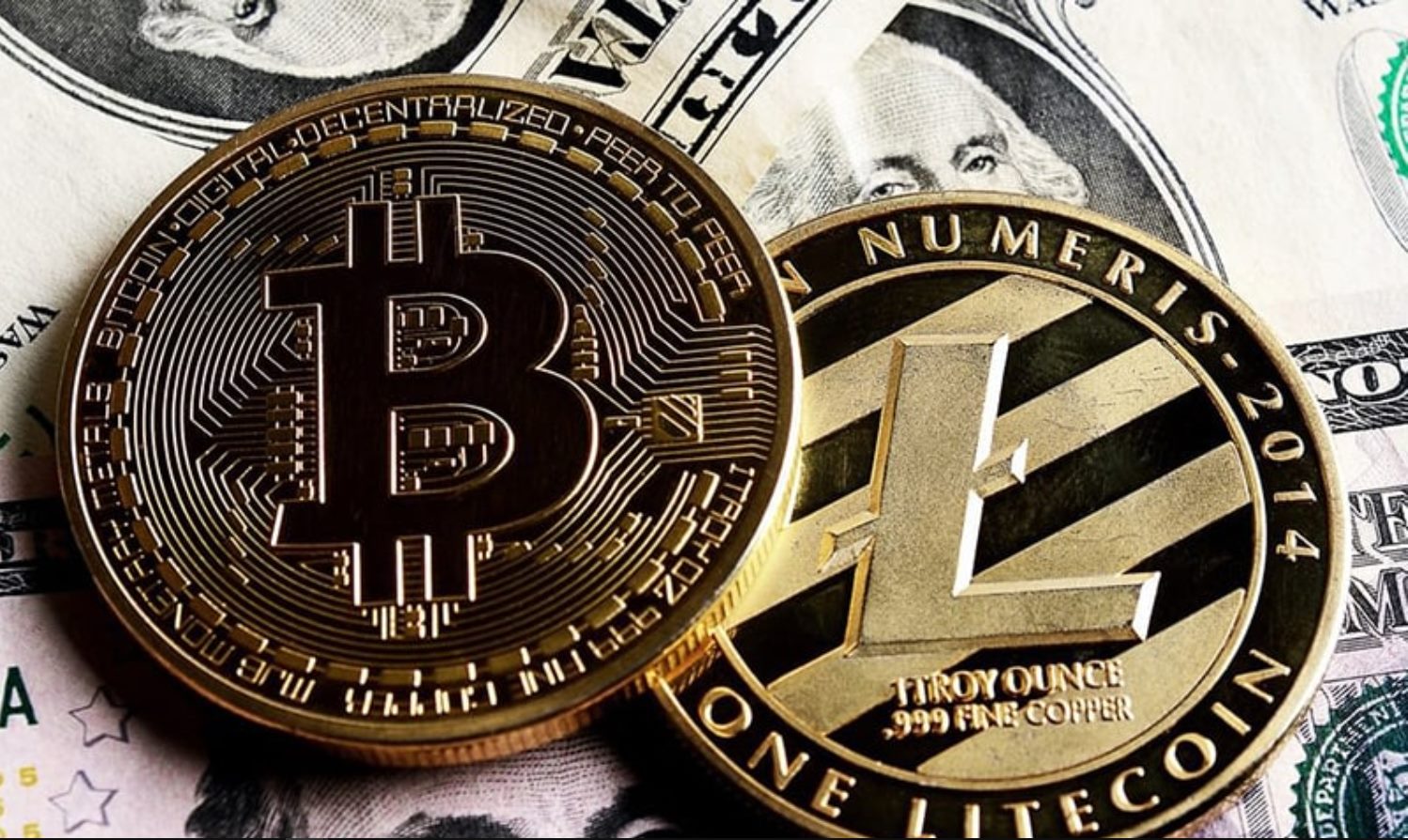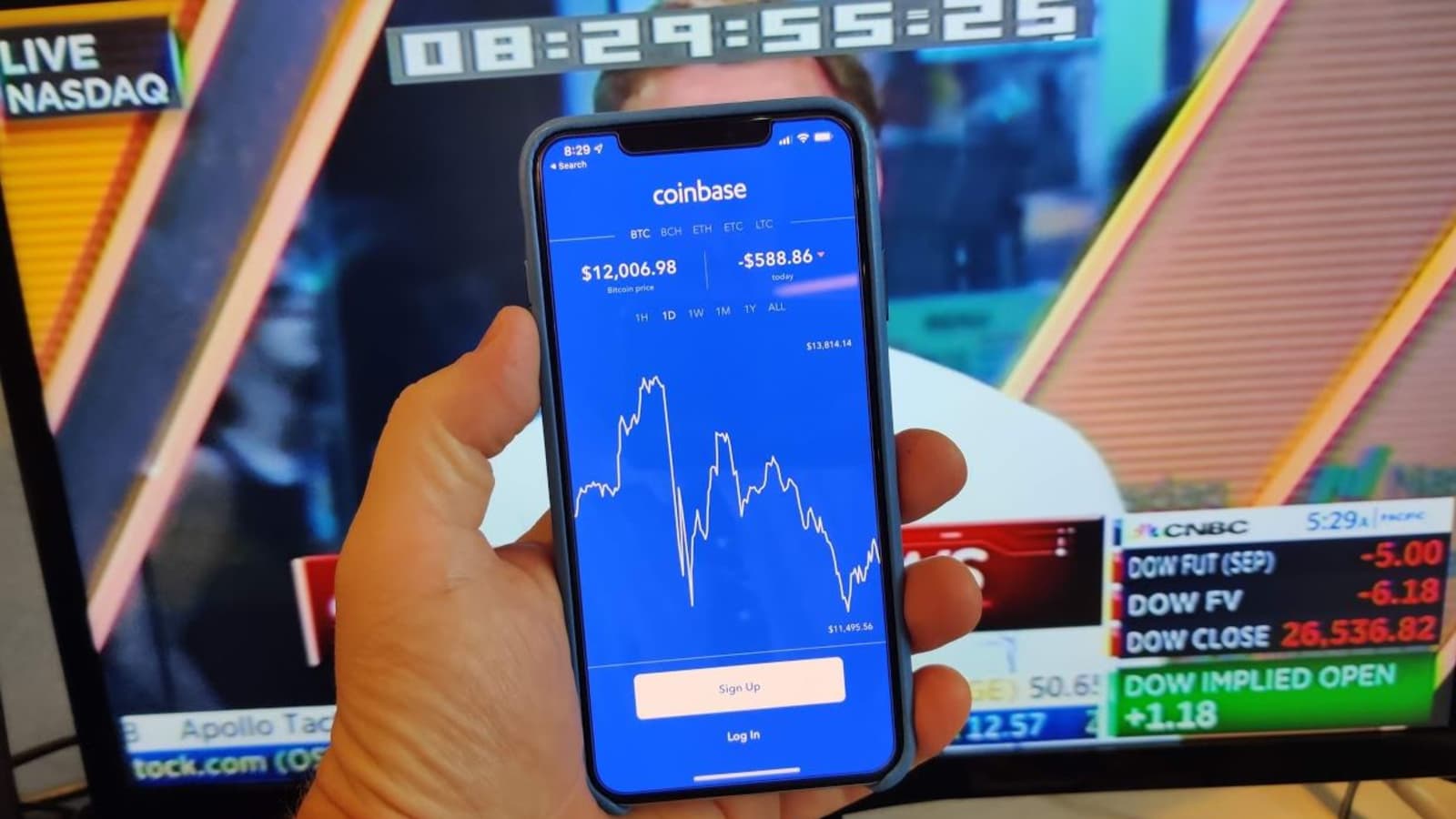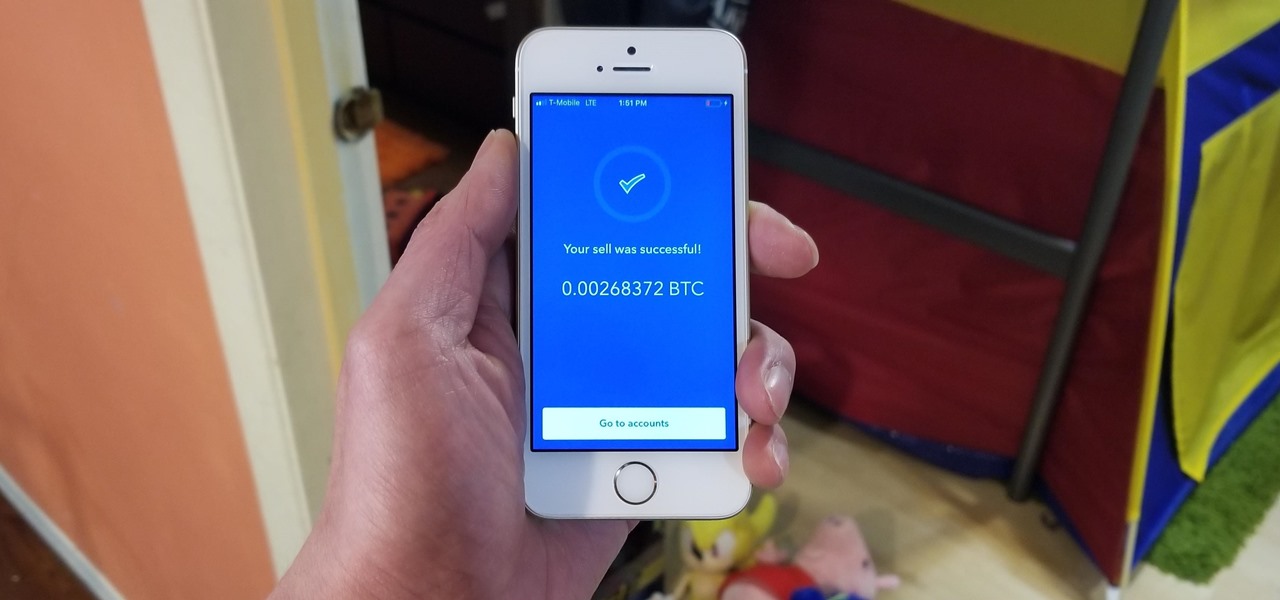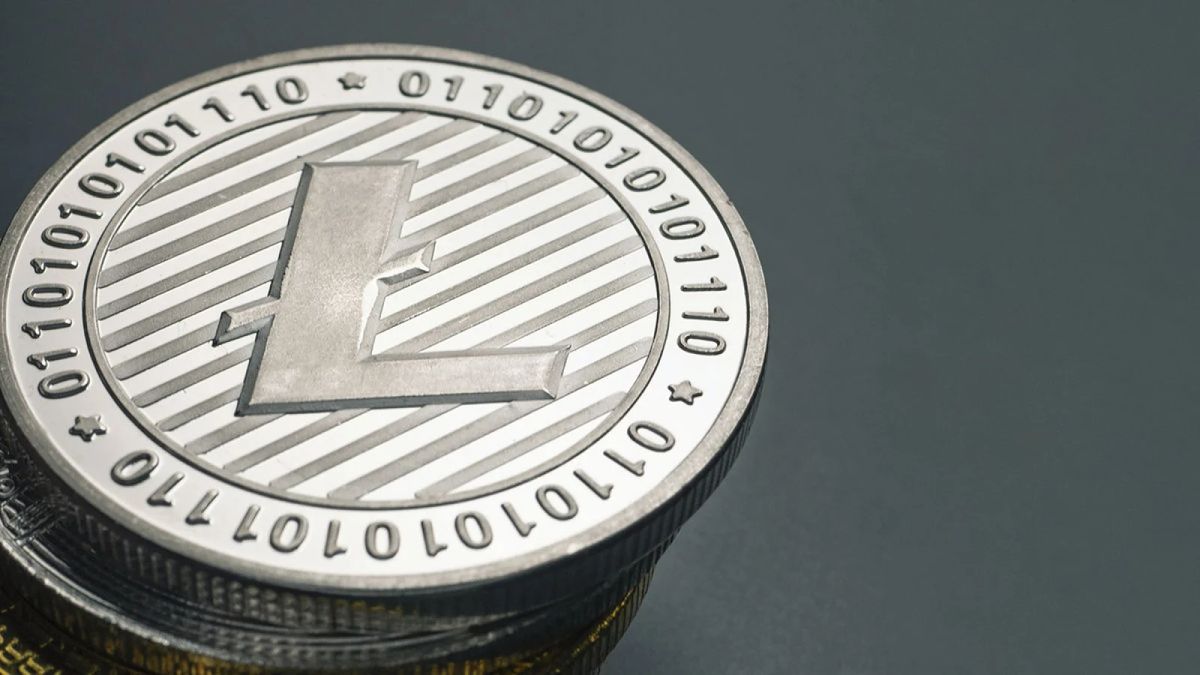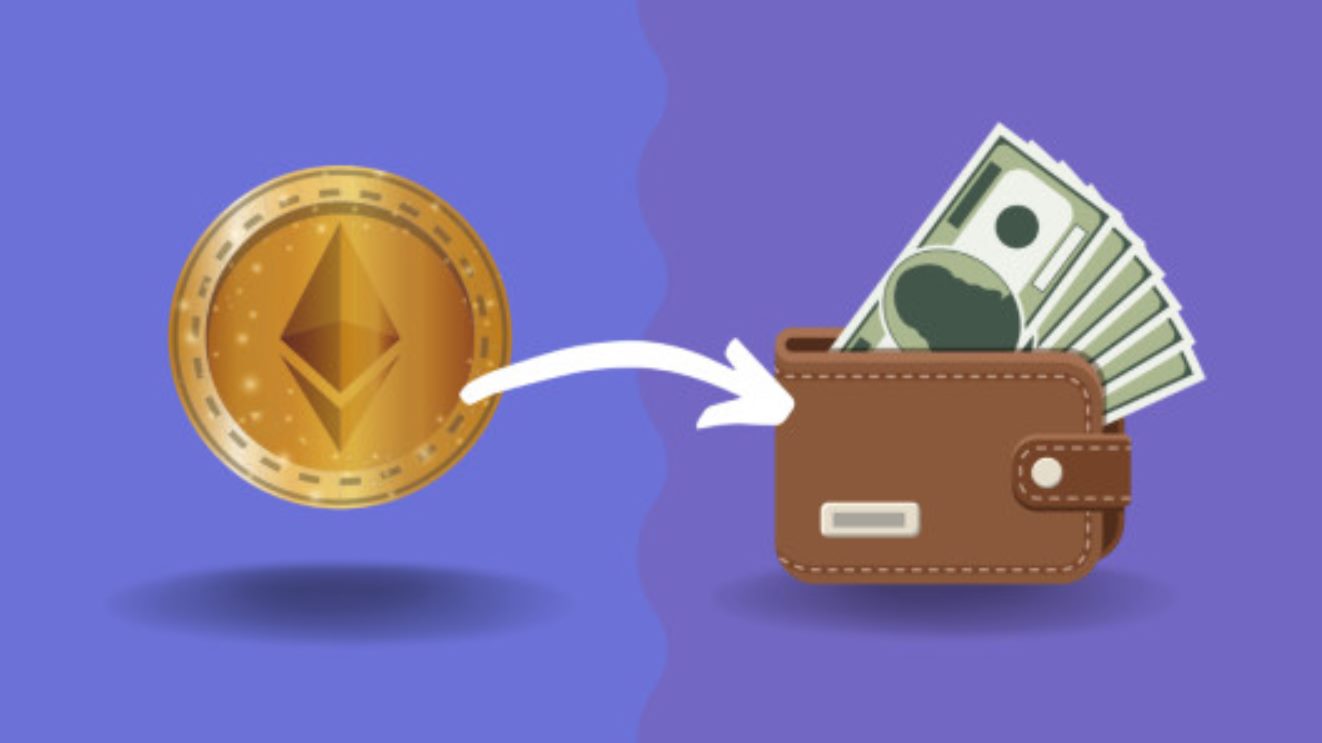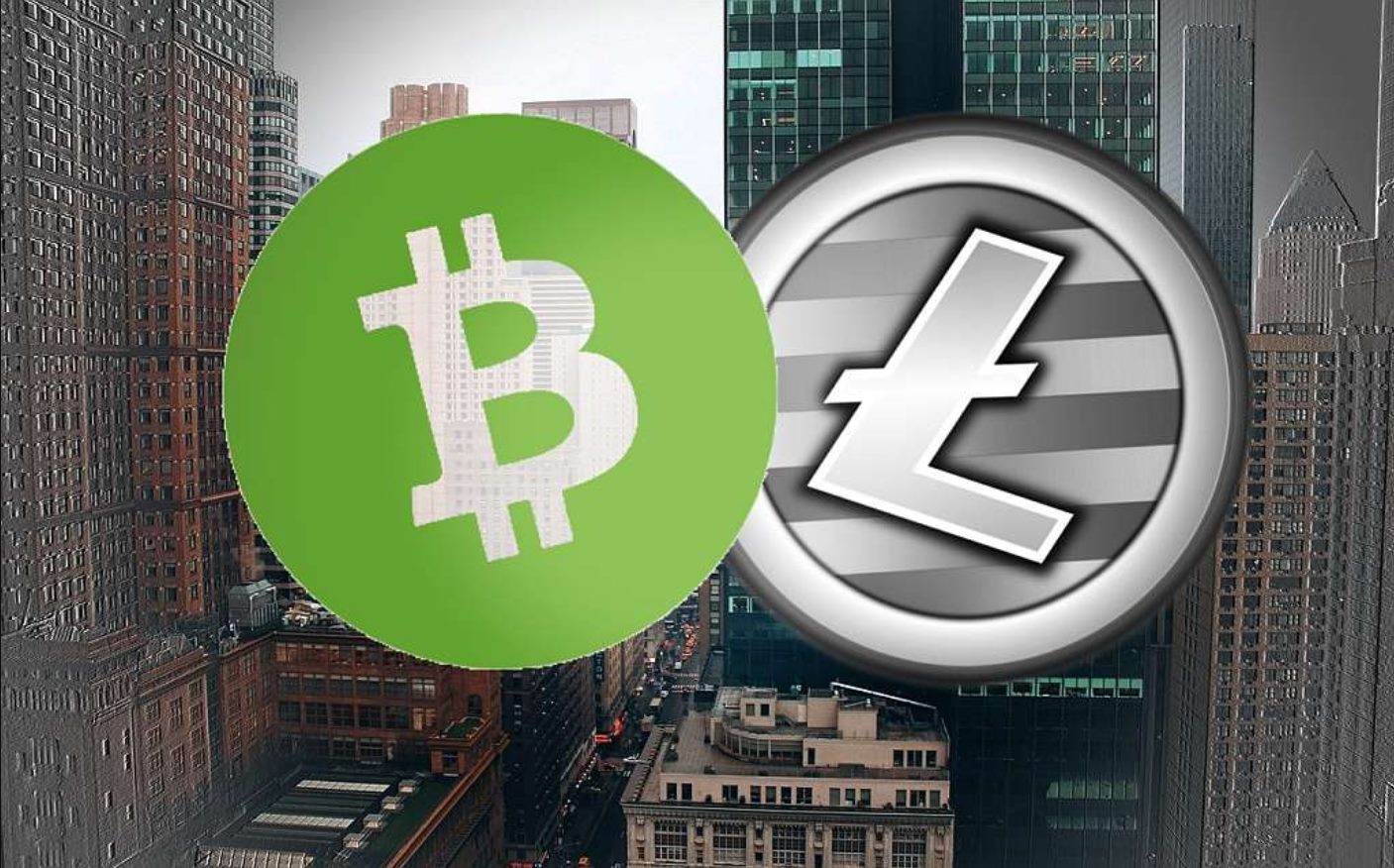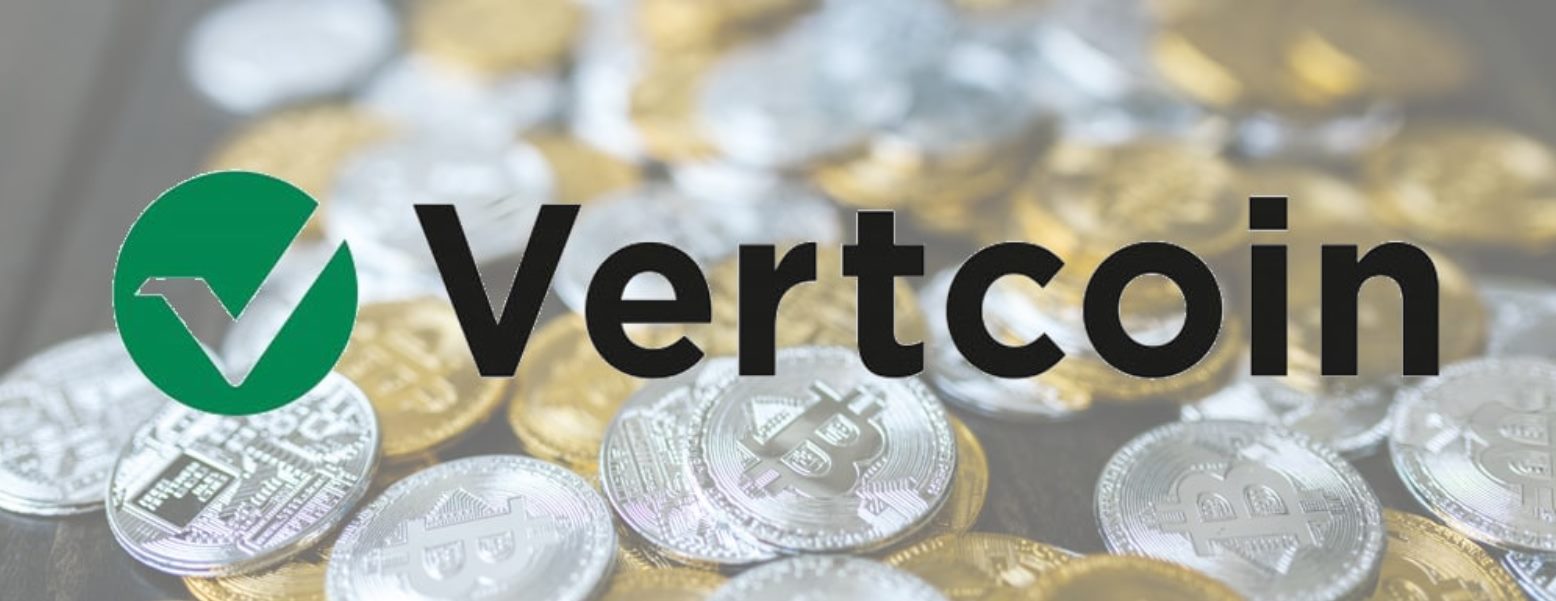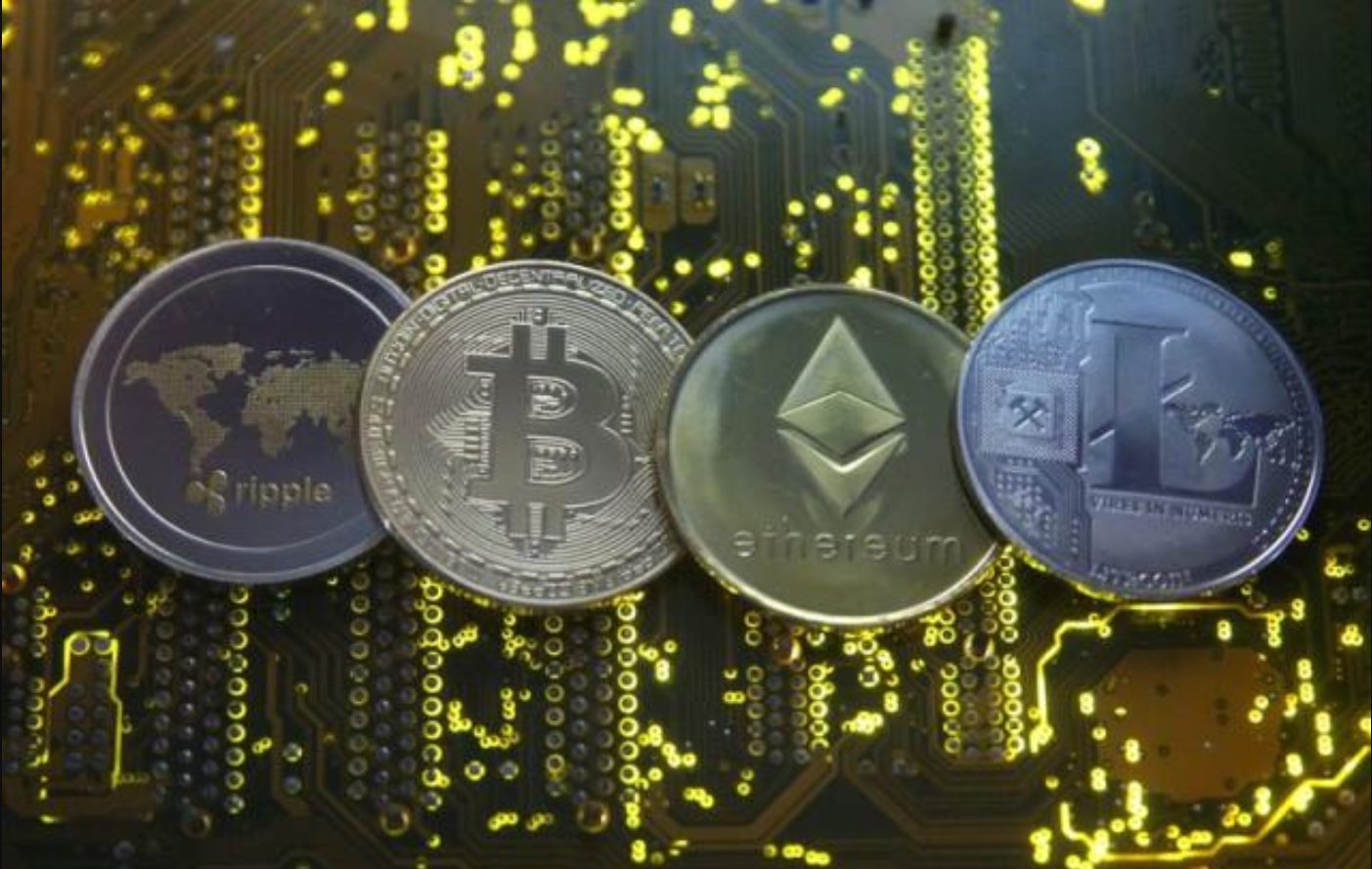Introduction
Welcome to our guide on how to convert Litecoin to Bitcoin. Cryptocurrencies have become increasingly popular in recent years, offering users a decentralized and secure form of digital currency. While both Litecoin and Bitcoin are widely recognized cryptocurrencies, there may come a time when you need to convert one to the other. Whether you’re looking to diversify your investment portfolio or simply want to explore different cryptocurrencies, knowing how to convert Litecoin to Bitcoin is a valuable skill to have in the crypto world.
Litecoin, often referred to as “the silver to Bitcoin’s gold,” was created in 2011 as a fork of the Bitcoin codebase. It offers faster transaction confirmations and a different hashing algorithm, making it an attractive alternative to Bitcoin. On the other hand, Bitcoin is the most well-known and dominant cryptocurrency, acting as a digital store of value and a medium of exchange. Converting Litecoin to Bitcoin allows you to take advantage of the benefits and opportunities offered by both cryptocurrencies.
There are several reasons why you may want to convert Litecoin to Bitcoin. Firstly, Bitcoin has a higher market capitalization and liquidity compared to Litecoin, making it easier to buy and sell. Additionally, Bitcoin is more widely accepted by merchants and exchanges, providing greater flexibility in using and exchanging your digital assets. Furthermore, converting Litecoin to Bitcoin can be beneficial if you believe Bitcoin has a greater potential for future growth or if you want to take advantage of specific features offered by the Bitcoin network.
In this guide, we will walk you through the process of converting Litecoin to Bitcoin. We’ll cover the necessary steps, including setting up a Bitcoin wallet, selecting a cryptocurrency exchange, and executing the conversion trade. Whether you’re a novice cryptocurrency user or an experienced investor, this guide will provide you with the information and insights you need to successfully convert Litecoin to Bitcoin.
What is Litecoin?
Litecoin is a peer-to-peer cryptocurrency that was created by Charlie Lee in 2011. It is considered one of the earliest altcoins, or alternative cryptocurrencies, and is often referred to as “the silver to Bitcoin’s gold.” Litecoin was designed to improve upon some of the limitations of Bitcoin and offer a faster and more scalable digital currency.
Similar to Bitcoin, Litecoin operates on a decentralized network where transactions are recorded on a public ledger called the blockchain. However, there are a few key differences that set Litecoin apart. One of the main differences is the hashing algorithm used for transaction processing. While Bitcoin uses the SHA-256 algorithm, Litecoin utilizes Scrypt, which requires less computational power and allows for faster confirmation times.
Litecoin also has a larger maximum supply compared to Bitcoin, with a total of 84 million Litecoins that can ever be mined. This higher supply results in a lower transaction fee when compared to Bitcoin, making it more cost-effective for smaller transactions. Additionally, Litecoin aims to maintain a four times faster block generation time of 2.5 minutes, compared to Bitcoin’s average block time of 10 minutes. The faster block generation time ensures quicker transaction confirmations and a more efficient network.
Litecoin has gained popularity among cryptocurrency enthusiasts for its technological advancements and affordable transaction fees. It has become widely accepted by merchants and is listed on numerous cryptocurrency exchanges, making it easily accessible for buying, selling, and converting to other cryptocurrencies, such as Bitcoin.
Litecoin can be stored in various types of cryptocurrency wallets, including hardware wallets, software wallets, and online wallets. These wallets provide a secure way to store and manage your Litecoins, allowing you to have full control over your digital assets.
Overall, Litecoin offers a reliable and efficient alternative to Bitcoin, with faster transaction confirmations, lower fees, and ample opportunities for investment and trading. Its unique features and widespread adoption make it a valuable asset in the cryptocurrency market.
What is Bitcoin?
Bitcoin is the world’s first decentralized digital currency, created by an anonymous person or group of people under the pseudonym Satoshi Nakamoto in 2009. It operates on a peer-to-peer network known as the blockchain, which ensures transparency and security for all transactions.
Bitcoin offers a decentralized alternative to traditional fiat currencies, such as the US dollar or the Euro. It is not controlled by any central authority, such as a government or financial institution, which gives users more control and freedom over their money.
One of the key features of Bitcoin is its limited supply. The total number of Bitcoins that can ever be created is capped at 21 million. This scarcity, combined with the growing demand and adoption of Bitcoin, has led to its reputation as a digital store of value and potential hedge against inflation.
To ensure the security and immutability of transactions, Bitcoin uses a cryptographic system. Each transaction is verified by network nodes through a process called mining, where powerful computers compete to solve complex mathematical problems. Miners are rewarded with newly minted Bitcoins for their contribution to the network.
Bitcoin transactions are recorded on the blockchain, a public ledger that stores all transaction history. This allows for transparency and accountability, as anyone can view the transaction details while maintaining the anonymity of Bitcoin wallet addresses.
Bitcoin has gained widespread acceptance as a medium of exchange, and its adoption continues to grow. Many merchants and online platforms now accept Bitcoin as a form of payment. Additionally, Bitcoin has become a popular investment asset, attracting both individuals and institutional investors.
Bitcoin can be stored in various types of wallets, including software wallets, hardware wallets, and paper wallets. Each offers different levels of security and convenience, allowing users to choose the best option for storing their Bitcoins.
Overall, Bitcoin has revolutionized the financial world by offering a decentralized and secure form of digital currency. Its unique properties and growing adoption have positioned it as a leader in the cryptocurrency market, making it an attractive option for both users and investors.
Why Convert Litecoin to Bitcoin?
There are several reasons why you may consider converting Litecoin to Bitcoin. While Litecoin offers its own unique advantages, such as faster transaction times and lower fees, Bitcoin remains the dominant cryptocurrency with the highest market capitalization. Here are some key reasons why you might choose to convert Litecoin to Bitcoin:
- Greater market liquidity: Bitcoin has a larger market capitalization and higher trading volume compared to Litecoin. This means that there is generally more liquidity when buying or selling Bitcoin, making it easier to enter or exit positions.
- Wider acceptance: Bitcoin is more widely accepted as a form of payment by merchants, online platforms, and exchanges. By converting Litecoin to Bitcoin, you gain access to a broader range of options for using and exchanging your digital assets.
- Diversification: Converting Litecoin to Bitcoin allows you to diversify your cryptocurrency holdings. Bitcoin has historically been the most well-known and established cryptocurrency, acting as a digital store of value and a hedge against inflation. Holding both Litecoin and Bitcoin can help spread your risk across different cryptocurrencies.
- Investment opportunities: Bitcoin has been recognized as a potential long-term investment by many investors. It has a track record of significant price appreciation and is often viewed as a digital equivalent of gold. By converting Litecoin to Bitcoin, you can participate in the potential growth and future opportunities of the Bitcoin market.
- Access to Bitcoin-specific features: Bitcoin’s larger network and developer community have led to the development of various features and applications specific to Bitcoin. This includes technologies like the Lightning Network for faster and cheaper transactions, as well as decentralized finance (DeFi) applications built on the Bitcoin blockchain. By converting Litecoin to Bitcoin, you can take advantage of these unique features and opportunities.
It’s important to note that the decision to convert Litecoin to Bitcoin should be based on your investment goals, risk tolerance, and market analysis. Cryptocurrency markets are highly volatile, and prices can fluctuate rapidly. Therefore, it’s recommended to do thorough research and consult with a financial advisor before making any investment or conversion decisions.
Understanding the Process of Converting Litecoin to Bitcoin
Converting Litecoin to Bitcoin involves several steps that allow you to transfer your Litecoin funds to a cryptocurrency exchange and then execute a trade to acquire Bitcoin. Here’s a breakdown of the process:
- Setting up a wallet for Bitcoin: Before you can convert Litecoin to Bitcoin, you need to ensure you have a Bitcoin wallet to receive and store your Bitcoin. There are various types of wallets available, including software wallets, hardware wallets, and online wallets. Choose a wallet that suits your security needs and preferences.
- Selecting a cryptocurrency exchange: Research and choose a reputable cryptocurrency exchange that supports both Litecoin and Bitcoin. Look for exchanges that offer competitive fees, good liquidity, and a user-friendly interface. Popular exchanges include Coinbase, Binance, and Kraken.
- Creating an account on the chosen exchange: Sign up for an account on the selected cryptocurrency exchange. This typically involves providing basic personal information and verifying your identity, as required by Know Your Customer (KYC) regulations.
- Verifying your account on the exchange: Complete the necessary verification steps required by the exchange. This may involve uploading identification documents and proof of address to verify your identity.
- Transferring Litecoin to the exchange: Once your account is verified, you can transfer your Litecoin from your wallet to the exchange. Generate a Litecoin deposit address on the exchange and initiate a transfer from your wallet to that address. Make sure to double-check the address to avoid any mistakes.
- Placing a trade order: After your Litecoin deposit is confirmed on the exchange, navigate to the trading section and place a trade order to convert your Litecoin to Bitcoin. Specify the amount of Litecoin you want to sell and set the desired price or use the market price to execute the trade immediately.
- Completing the trade: Once your trade order is matched with a buyer, the trade will be executed, and you will receive Bitcoin in your exchange account. You can check your account balance to confirm the successful conversion.
- Transferring Bitcoin to your wallet: Finally, transfer your Bitcoin from the exchange to your Bitcoin wallet for secure storage. Withdraw the Bitcoin to your wallet by generating a Bitcoin withdrawal address on the exchange and initiating the transfer.
It’s essential to exercise caution throughout the conversion process, ensuring you are using a reputable exchange and double-checking all addresses before initiating any transfers. Additionally, pay attention to fees and market fluctuations that may impact the conversion rate between Litecoin and Bitcoin.
By following these steps, you can successfully convert your Litecoin to Bitcoin and take advantage of the benefits and opportunities offered by both cryptocurrencies.
Step 1: Setting up a Wallet for Bitcoin
Before you can convert Litecoin to Bitcoin, you need to ensure that you have a Bitcoin wallet to receive and store your Bitcoin securely. A Bitcoin wallet is a digital wallet that allows you to store, send, and receive Bitcoin.
There are various types of Bitcoin wallets, each with its own advantages and security features:
- Software Wallets: Software wallets are applications that you can install on your desktop, laptop, or mobile device. They offer a convenient way to manage your Bitcoin directly from your device. Some popular software wallets include Electrum, Exodus, and Trust Wallet.
- Hardware Wallets: Hardware wallets are physical devices specifically designed to store cryptocurrency private keys offline. They provide an extra layer of security by keeping your private keys secure, even if your computer or mobile device is compromised. Leading hardware wallet brands include Ledger, Trezor, and KeepKey.
- Online Wallets: Online wallets, also known as web wallets or cloud wallets, operate on web-based platforms. They store your private keys on remote servers, accessible through the internet. While online wallets offer convenience and accessibility, they may have some security risks. Popular online wallets include Coinbase Wallet, MyEtherWallet, and Blockchain.com.
- Paper Wallets: Paper wallets are physical printouts or written copies of your Bitcoin keys. They provide an offline storage option, as the private keys are not stored digitally. Creating a paper wallet involves generating a unique Bitcoin address and its corresponding private key, which you can print or write down. Paper wallets should be stored securely to protect against loss or theft.
When choosing a Bitcoin wallet, consider factors such as security, ease of use, and the level of control you desire over your funds. Hardware wallets are generally regarded as the most secure option, as they keep your private keys offline and require physical access to the device for transactions. However, software wallets and online wallets can also offer robust security measures when used responsibly.
Once you have chosen the type of wallet that suits your needs, follow the specific instructions provided by the wallet provider to set up and secure your Bitcoin wallet. This usually involves creating a strong password and recording the recovery seed or passphrase, which you can use to restore access to your wallet in case of loss or device failure.
Remember to keep your Bitcoin wallet credentials confidential and never share your private keys with anyone. Regularly update your wallet software and follow recommended security practices, such as enabling two-factor authentication (2FA) for an extra layer of protection.
By setting up a Bitcoin wallet, you are taking the first step towards converting your Litecoin to Bitcoin and securely managing your Bitcoin holdings.
Step 2: Selecting a Cryptocurrency Exchange
Once you have set up your Bitcoin wallet, the next step in converting Litecoin to Bitcoin is selecting a reputable cryptocurrency exchange. A cryptocurrency exchange is an online platform where you can buy, sell, and trade cryptocurrencies.
When choosing a cryptocurrency exchange, consider the following factors:
- Reputation and Security: Look for exchanges that have a solid reputation in the industry and a track record of securely handling user funds. Research the exchange’s security measures, such as two-factor authentication, cold storage, and insurance coverage for digital assets.
- Supported Currencies: Ensure that the exchange supports both Litecoin and Bitcoin. Some exchanges may have a limited selection of cryptocurrencies available for trading, so check if your desired trading pair is available.
- Liquidity: Liquidity refers to the ease of buying or selling an asset without significantly affecting its price. Choose an exchange with sufficient liquidity for the Litecoin to Bitcoin trading pair to ensure smooth execution of your trades.
- Trading Fees: Exchanges charge fees for executing trades. Compare the fees charged by different exchanges and consider whether the fee structure aligns with your trading strategy.
- User Interface and Experience: Look for an exchange that has a user-friendly interface and provides a seamless trading experience. The trading platform should be intuitive and offer advanced features if you require them.
- Regulatory Compliance: Check if the exchange operates in compliance with regulations in your country or region. Compliance with regulatory standards adds an extra layer of security and ensures that the exchange adheres to necessary legal requirements.
- Customer Support: Consider the level of customer support provided by the exchange. A reputable exchange should have responsive customer service to assist you in case of any issues or inquiries.
Some well-known cryptocurrency exchanges that support Litecoin and Bitcoin trading include Coinbase, Binance, Kraken, and Bitstamp. However, it’s essential to conduct your own research and read user reviews to determine which exchange aligns best with your requirements.
Additionally, consider the geographical restrictions imposed by exchanges. Some exchanges have limitations on accepting users from certain countries, so check if the exchange is available in your location.
By carefully selecting a reliable cryptocurrency exchange, you can ensure a secure and efficient platform for converting your Litecoin to Bitcoin.
Step 3: Creating an Account on the Chosen Exchange
Once you have chosen a suitable cryptocurrency exchange for converting Litecoin to Bitcoin, the next step is creating an account on the exchange. This account will allow you to access the exchange’s platform, deposit funds, and execute trades.
Here are the steps to create an account on a cryptocurrency exchange:
- Visit the exchange’s website: Go to the official website of the chosen cryptocurrency exchange. Make sure you are on the correct website and beware of phishing attempts.
- Click on the “Sign Up” or “Register” button: Look for the option to create a new account. This button is usually prominently displayed on the exchange’s homepage.
- Provide your email address: Enter a valid email address that you have access to. This email will be used for account verification and future communication with the exchange.
- Create a strong password: Choose a unique and strong password for your account. Make sure to include a combination of uppercase and lowercase letters, numbers, and symbols to enhance the security of your account.
- Agree to the terms and conditions: Read and agree to the exchange’s terms of service and any other relevant policies.
- Complete any additional registration steps: Depending on the exchange, you may be required to provide additional personal information, such as your full name, address, and date of birth. This information is often required for Know Your Customer (KYC) compliance purposes.
- Set up two-factor authentication (2FA): Enable two-factor authentication to add an extra layer of security to your account. This typically involves linking your account to a 2FA app, such as Google Authenticator or Authy, which generates one-time verification codes.
- Verify your email: Check your email inbox for a verification link sent by the exchange. Click on the link to verify your email address and activate your account.
It’s important to note that some exchanges may have different registration processes or additional verification requirements. Follow the instructions provided by the exchange during the registration process to successfully create your account.
Keep in mind that you should provide accurate and truthful information during the registration process. Providing false information can result in account suspension or even legal repercussions.
Once your account is created, you’ll typically have access to your account dashboard, where you can further customize your profile, set up additional security measures, and navigate the exchange’s different trading features.
By creating an account on the chosen cryptocurrency exchange, you are one step closer to converting your Litecoin to Bitcoin and engaging in cryptocurrency trading.
Step 4: Verifying Your Account on the Exchange
After creating an account on a cryptocurrency exchange, the next step in converting Litecoin to Bitcoin is going through the verification process. Most exchanges require some level of account verification, especially for higher transaction limits and increased security measures. The verification process is primarily done to comply with regulatory requirements and combat fraud or money laundering.
Here is an overview of the steps involved in verifying your account on a cryptocurrency exchange:
- Access your account settings: Log in to your newly created account on the cryptocurrency exchange. Locate the account settings section, often found under the user profile or account management menu.
- Provide personal information: Follow the instructions provided by the exchange to enter your personal information. This usually includes your full name, date of birth, residential address, and contact details. Ensure that you provide accurate and up-to-date information.
- Upload identification documents: Most exchanges require you to provide scanned or photographed copies of your identification documents for verification purposes. This typically includes a government-issued ID, such as a passport or driver’s license. Some exchanges may also request additional documents, such as proof of address (e.g., utility bill or bank statement) to verify your residential address.
- Submit the verification documents: Upload the scanned or photographed copies of your identification documents through the exchange’s verification interface. Ensure that the documents are clear, properly visible, and within the supported file format and size limits.
- Wait for verification: The verification process can take varying amounts of time, ranging from a few minutes to several days depending on the exchange’s policies and workload. Some exchanges offer different verification tiers, with each tier providing increased transaction limits and access to more features.
- Monitor your email or account notifications: Some exchanges may require additional information or ask for clarifications during the verification process. Stay attentive to your email or account notifications to provide any requested information promptly.
- Receive verification confirmation: Once your account verification is approved, the exchange will notify you with verification confirmation. You will usually receive an email or see a notification within your account dashboard.
It’s essential to note that the verification requirements and process may differ among exchanges. Some exchanges may complete the verification process instantly, while others may require manual review by their support team.
During the verification process, it’s important to follow the exchange’s instructions carefully and provide accurate information. Failure to comply with the exchange’s verification requirements can lead to delays in the verification process or potential account suspension.
By completing the account verification on the chosen cryptocurrency exchange, you will gain access to higher transaction limits and enhanced security features, enabling you to convert your Litecoin to Bitcoin confidently.
Step 5: Transferring Litecoin to the Exchange
After setting up and verifying your account on the chosen cryptocurrency exchange, the next step in converting Litecoin to Bitcoin is transferring your Litecoin to the exchange. This process involves sending your Litecoin from your personal wallet to your exchange account.
Here are the steps to transfer your Litecoin to the exchange:
- Access your exchange account: Log in to your account on the cryptocurrency exchange. Navigate to your account dashboard or the section specifically designated for deposits.
- Locate your Litecoin deposit address: Look for the Litecoin deposit option in your account. The exchange will provide you with a unique deposit address or a QR code to receive your Litecoin. This address belongs to your exchange account and should be used exclusively for Litecoin deposits.
- Access your personal Litecoin wallet: Open your personal Litecoin wallet, whether it is a software wallet, hardware wallet, or online wallet. Locate the option to send or transfer funds from your wallet.
- Enter the deposit address: In your personal Litecoin wallet, provide the Litecoin deposit address from your exchange account as the recipient address for the transfer. Double-check the address to ensure its accuracy to avoid any errors or lost funds.
- Specify the amount: Indicate the amount of Litecoin you wish to transfer to the exchange. Ensure that you have enough Litecoin in your personal wallet to cover the amount, including any transaction fees associated with the transfer.
- Confirm and initiate the transfer: Review the details of the transfer, including the recipient address and the amount of Litecoin being sent. Once you are satisfied with the information, confirm and initiate the transfer from your personal wallet.
- Wait for confirmation: The transfer will be broadcasted to the Litecoin network for confirmation. Depending on the network congestion and the confirmation settings of your personal wallet, it may take a few minutes to several hours for the transfer to be confirmed.
- Monitor your exchange account: Keep an eye on your exchange account to see when the Litecoin deposit is credited. This information will typically be available in your account dashboard or transaction history.
It’s important to note that transfer times can vary based on network congestion and the confirmation requirements of the cryptocurrency being transferred. Litecoin typically offers faster confirmation times compared to Bitcoin, which may result in quicker deposit credits to your exchange account.
Ensure that you have sufficient Litecoin in your personal wallet and consider any network fees associated with the transfer. Be aware that exchanges may have minimum deposit requirements, so make sure the amount you transfer meets the exchange’s minimum threshold.
By successfully transferring your Litecoin to the exchange, you are now ready to proceed with the next step in converting Litecoin to Bitcoin, which is placing a trade order on the exchange.
Step 6: Placing a Trade Order
After transferring your Litecoin to the cryptocurrency exchange, you can proceed to the next step of converting Litecoin to Bitcoin, which involves placing a trade order on the exchange. Placing a trade order allows you to sell your Litecoin in exchange for Bitcoin at the desired exchange rate.
Here are the steps to place a trade order on a cryptocurrency exchange:
- Access the trading section: Navigate to the trading section or trading dashboard of the exchange. Look for the trading pairs that involve Litecoin and Bitcoin, such as LTC/BTC or LTC- BTC.
- Select the appropriate trading pair: Choose the Litecoin and Bitcoin trading pair from the available options. This ensures that you are trading Litecoin for Bitcoin specifically.
- Choose the type of trade: Select the type of trade order you want to place. The most common types include market orders and limit orders.
- Market Order: If you choose a market order, you will be executing the trade at the current market price. Your Litecoin will be sold immediately at the prevailing market rate for Bitcoin.
- Limit Order: With a limit order, you can specify the price at which you want to sell your Litecoin. This allows you to set a predetermined price and wait for the market to reach or exceed that price before executing the trade.
- Enter the trade details: Specify the amount of Litecoin you want to sell in the trade order. Depending on the exchange, you may have the option to enter the amount in Litecoin or set the equivalent Bitcoin value you wish to receive.
- Review the order details: Verify the trade details, including the trade type, Litecoin amount, price, and estimated Bitcoin amount to be received. Ensure that all the details are accurate before proceeding.
- Place the trade order: Once you are satisfied with the trade order details, confirm and place the trade order. The exchange will process your order and attempt to match it with a buyer interested in purchasing Litecoin for Bitcoin.
- Monitor the trade order: Keep an eye on the status of your trade order on the exchange. You may see real-time updates on the order execution, such as the order being matched and executed.
It’s important to note that the speed of trade execution and the liquidity of the market can impact how quickly your trade order gets fulfilled. If there is high demand or low liquidity, it may take longer for your trade order to be matched.
Additionally, consider the fees associated with trading on the exchange, such as transaction fees and trading commissions. Familiarize yourself with the fee structure of the exchange to ensure you are aware of the costs involved in executing the trade.
By successfully placing a trade order on the cryptocurrency exchange, you are on your way to converting your Litecoin to Bitcoin.
Step 7: Completing the Trade
After placing a trade order to sell your Litecoin for Bitcoin, the next step in converting Litecoin to Bitcoin is completing the trade. This step involves the exchange matching your sell order with a buyer interested in purchasing Litecoin for Bitcoin and executing the transaction.
Here are the steps to complete the trade on a cryptocurrency exchange:
- Monitor the trade order status: Keep an eye on the status of your trade order on the exchange. You may see real-time updates indicating the progress of your trade being matched.
- Order matching: Once the exchange finds a suitable buyer who wants to purchase Litecoin at your specified price or the current market price (for market orders), the trade order will be matched.
- Trade execution: At this point, the exchange will execute the trade, exchanging your Litecoin for the agreed-upon amount of Bitcoin. The transaction will be recorded on the blockchain, assuring its transparency and immutability.
- Confirmation: Depending on the exchange and the blockchain network, it may take some time for the transaction to be confirmed. During this time, the exchange may display the trade as “in progress” or “pending” until the required number of confirmations is reached.
- Check your balances: After the trade is successfully completed and confirmed, check your exchange account balances. You should see the new balance of Bitcoin reflecting the amount you have received from selling your Litecoin.
- Review the trade details: Take a moment to review the trade details, including the executed price, trading fees, and the amount of Litecoin and Bitcoin involved in the trade. Ensure that everything matches your expectations.
- Withdraw your Bitcoin: If you plan to hold your Bitcoin in your personal wallet for security or further use, withdraw your Bitcoin from the exchange. Generate a Bitcoin withdrawal address in your personal wallet and initiate the transfer of your Bitcoin from the exchange to your wallet.
- Keep record of the trade: It’s good practice to keep a record of the trade details for future reference. This can include the trade confirmation, transaction ID, and any relevant information related to the conversion.
It’s important to note that the timeframe for completing the trade can vary depending on network congestion and the specific policies of the exchange. Additionally, fees may be incurred during the trade execution, so review the exchange’s fee structure to understand any costs associated with the transaction.
By completing the trade, you successfully converted your Litecoin to Bitcoin. Ensure that you secure your Bitcoin in your personal wallet and keep track of your cryptocurrency holdings.
Step 8: Transferring Bitcoin to Your Wallet
After completing the trade and receiving Bitcoin in your cryptocurrency exchange account, the final step in converting Litecoin to Bitcoin is transferring the Bitcoin to your personal wallet. Transferring your Bitcoin to your wallet allows you to have full control over your digital assets and provides enhanced security.
Here are the steps to transfer your Bitcoin to your personal wallet:
- Access your cryptocurrency exchange account: Log in to your account on the cryptocurrency exchange that you completed the trade on.
- Locate the Bitcoin withdrawal option: Navigate to the withdrawal section or funds management section of your exchange account. Look for the option specifically related to Bitcoin withdrawal.
- Enter your Bitcoin wallet address: In your personal Bitcoin wallet, generate a receiving address or use an existing one. Copy the Bitcoin wallet address.
- Paste the address in the withdrawal section: In the exchange’s withdrawal section, paste the Bitcoin wallet address you copied from your personal wallet. Double-check the address to ensure its accuracy.
- Specify the withdrawal amount: Enter the amount of Bitcoin you want to transfer to your personal wallet. Make sure you have enough Bitcoin in your exchange account to cover the withdrawal amount and any associated transaction fees.
- Review the withdrawal details: Before confirming the withdrawal, carefully review the details of the transaction. Verify the withdrawal address, the amount of Bitcoin, and any fees associated with the withdrawal.
- Confirm and initiate the withdrawal: Once you are satisfied with the withdrawal details, confirm and initiate the transaction. The exchange will process the withdrawal request and send the specified amount of Bitcoin to your personal wallet.
- Check your personal wallet: Monitor your personal wallet to ensure that the Bitcoin transfer is successfully completed. Depending on network conditions, it may take some time for the transaction to be confirmed on the blockchain.
- Verify the transaction: Once the transaction is confirmed, you can verify the transaction details on the blockchain explorer. This allows you to see the transaction ID, transaction status, and other relevant information.
- Secure your personal wallet: After confirming the Bitcoin transfer, ensure that you properly secure and backup your personal wallet. Use best security practices, such as enabling two-factor authentication (2FA) and storing your wallet’s backup phrase or private keys in a safe place.
By transferring your Bitcoin to your personal wallet, you gain full control of your digital assets and reduce the risk of potential security breaches that can occur on cryptocurrency exchanges.
Remember to regularly update your wallet software and follow recommended security measures to protect your Bitcoin holdings.
Congratulations! You have successfully converted your Litecoin to Bitcoin and securely transferred your Bitcoin to your personal wallet.
Conclusion
Converting Litecoin to Bitcoin is a process that allows you to explore different cryptocurrencies and take advantage of their unique features and opportunities. By following the steps outlined in this guide, you can successfully convert your Litecoin to Bitcoin and navigate the world of digital currencies.
We began by introducing Litecoin and Bitcoin, two prominent cryptocurrencies in the market. While Litecoin offers faster transaction confirmations and lower fees, Bitcoin remains the dominant cryptocurrency with higher market liquidity and wider merchant acceptance. Understanding the benefits of both cryptocurrencies can help you make informed decisions when converting between them.
We then provided a step-by-step guide to help you navigate the process of converting Litecoin to Bitcoin. Setting up a wallet for Bitcoin and selecting a reputable cryptocurrency exchange were the initial steps in the process. Next, we discussed how to create an account on the chosen exchange and provided guidance on verifying your account to comply with regulatory requirements.
Transferring your Litecoin to the exchange and placing a trade order were crucial steps in executing the conversion. We emphasized the importance of monitoring the trade order and ensuring accurate trade details. Finally, we discussed the significance of transferring your acquired Bitcoin to your personal wallet to enhance security and maintain full control over your digital assets.
Throughout the process, it’s essential to conduct thorough research, be mindful of transaction fees, and adhere to best security practices. Cryptocurrency markets are highly volatile, and prices can fluctuate rapidly, so it’s important to stay informed and make decisions based on your investment goals and risk tolerance.
Remember to consult with a financial advisor if needed and keep a record of your transactions for future reference.
By successfully converting your Litecoin to Bitcoin, you have opened up possibilities for further diversification, investment, and participation in the exciting world of cryptocurrencies. Enjoy your journey in the ever-evolving realm of digital assets!







